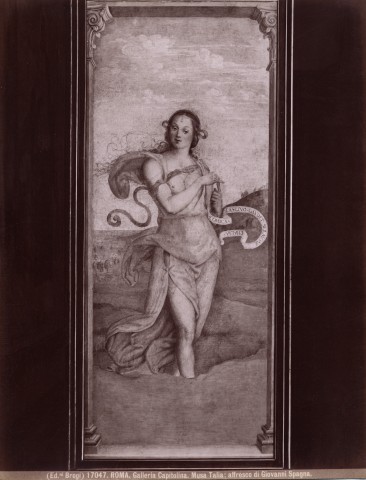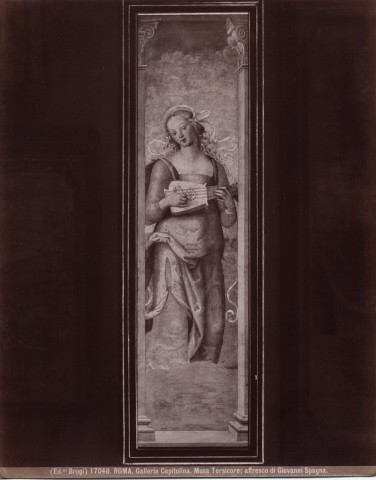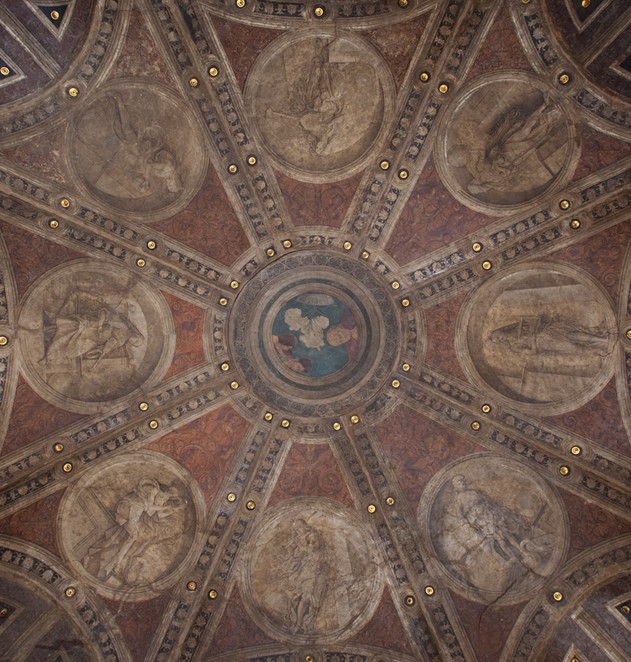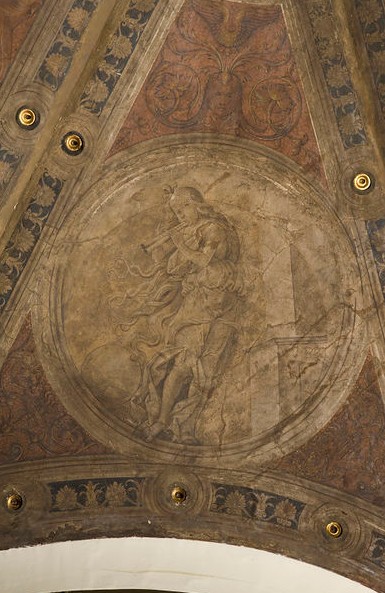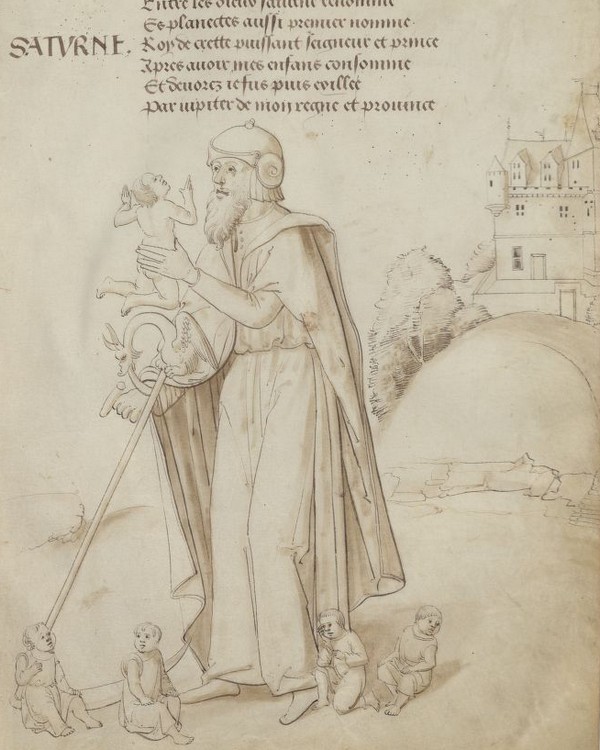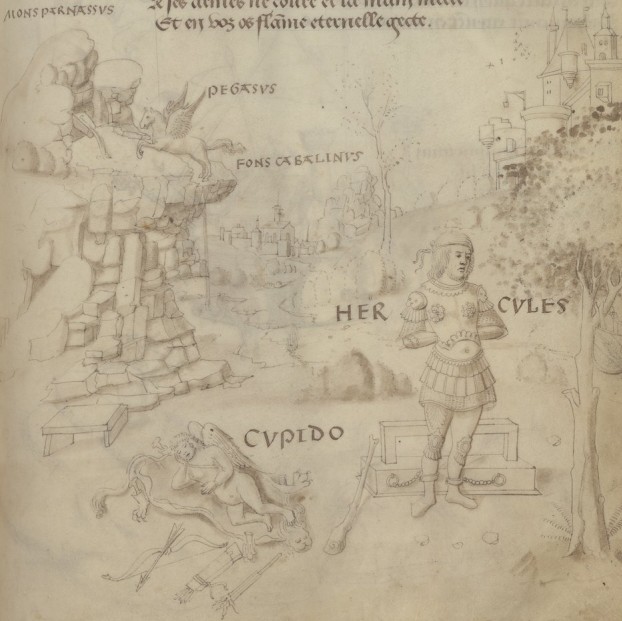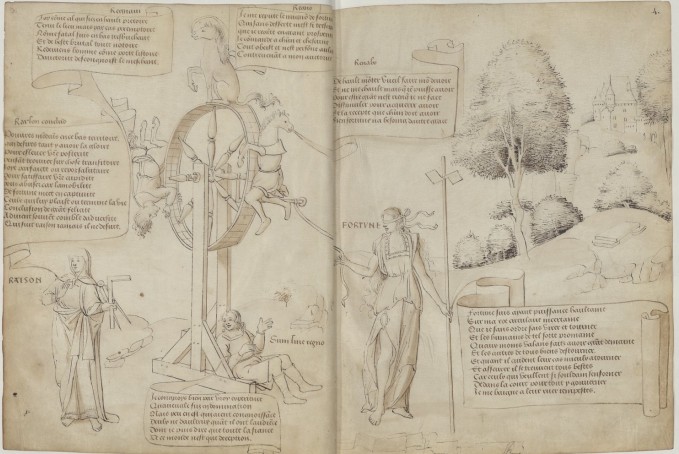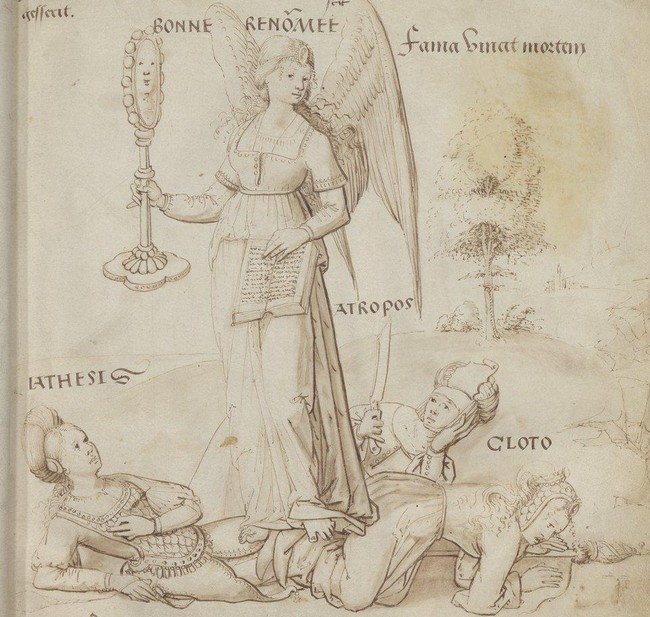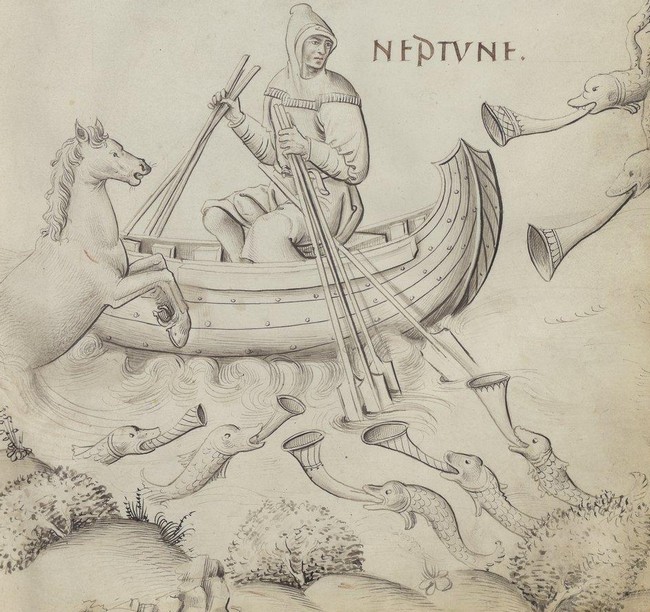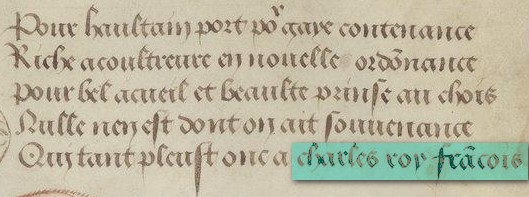I remember, that recently somewhere (here in the Forum?) Atropos, Lachesis and Clotho stood on a female body (a picture).
Well, I get it from here ...
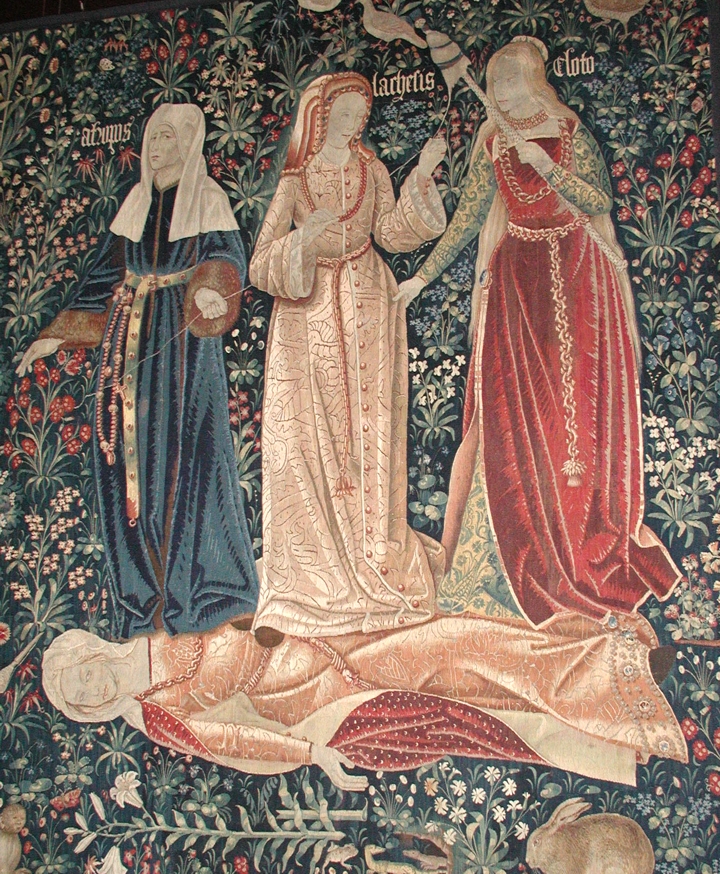 http://www.pdl.cmu.edu/Fates/
http://www.pdl.cmu.edu/Fates/
The Triumph of Death, or The 3 Fates
Flemish Tapestry (probably Brussels, ca. 1510-1520)
Victoria and Albert Museum, London, England
The three fates, Clotho, Lachesis and Atropos, who spin, draw out and cut the thread of Life, represent Death in this tapestry, as they triumph over the fallen body of Chastity. This is the third subject in Petrarch's poem The Triumphs. First, Love triumphs; then Love is overcome by Chastity, Chastity by Death, Death by Fame, Fame by Time and Time by Eternity.
The same motif is used for the Petrarca Trionfi in the above described French manuscript with its 128 themes.
The following picture is then Fame triumphing about the 3 ...
******************
Added:
I wonder about the date of the manuscript. Gallica gives very cautiously 1501-1600.
The text shows a "Duchesse of Bar" as the most elegant woman, any other person seems not to be honored. A possible duchess of Bar would be Philippa of Geldern, wife of René d'Anjou II, duke of Lorraine.
http://old.citadelle.org/magazine-16-99 ... rraine.cfm
Picture of 1506 in religious text, René with Philippa and children.
René was grandson to Isabella of Lorraine, who got the Michelino deck from Antonio Iacopo Marcello in 1449, he was born in 1451 and was educated at the fabulous court of Rene I d'Anjou, his grandfather. He fought victorious against Charles the Bold of Burgundy in 1477. He participated in the Ferrarese war 1483 on the side of Venice.
He played "Trionfi" in 1496 (
http://www.letarot.it/page.aspx?id=112 ), this is nearly the first appearance of the outside of Italy.
He is a rather good address for a suspected import of some early Italian Renaissance culture to regions near to France.
Brussels (the suspected location for the production of the Tapestry) isn't too far from Lorraine. The date (1510-1520)
is close enough to have had an influence of the Lorraine court.
Philippa
http://en.wikipedia.org/wiki/Philippa_of_Guelders
Louise of Savoy, mother of King Francois I, was a relative to Philippa from Philippa's mother's side. Around 1497 (as far I remember) the production of one hand painted edition of the Eschecs amoureux for Louise is noted.
Louise plays chess
http://expositions.bnf.fr/lamer/grand/067.htm
from the discussed text
This is the text of the short poem for "duchesse of Bar" ...
... I'm not an expert for French handwritten text, but I can identify a "Charles roy fracois" at the end.
One roy Charles (VIII) reigned till 1498, another Charles (IX) came to reign since 1560.
Perhaps somebody can help with this text.
*************
Added:
Story of the duchy Bar, according wiki ...
In 1354 the Count of Bar took the ducal title and was thereafter recognised as a Peer of France.[1] Père Anselme (died 1694) believed that Count Robert had been created a duchy by King John II of France in preparation for the count's marriage to John's daughter, Mary.[2] The rulers of Bar were not created dukes by imperial appointment. The only title Count Robert received by imperial grant in 1354 was that of Margrave of Pont-à-Mousson.[5] This margraviate was frequently bestowed by the Dukes of Bar on their heirs apparent. In that same year the emperor raised the County of Luxembourg into a duchy and Bar fell between two duchies, Luxembourg and Upper Lorraine.[6] The ducal title was accepted, however, and the imperial tax register of 1532 records the "Duchy on the Meuse" (Herzogtum von der Maß) as a voting member of the Reichstag
In 1430 the last duke of the male line of the ruling house, Louis, died.[6] Bar passed to his great-nephew, René I, who was married to Isabella, Duchess of Lorraine. In 1431 the couple inherited Lorraine. On René's death in 1480, Bar passed to his daughter Yolanda and her son, René II, who was already Duke of Lorraine. In 1482 he conquered the prévôté of Virton, a part of the Duchy of Luxembourg, and annexed it to Bar. In 1484 Peter II, Duke of Bourbon, regent for King Charles VIII of France, formally installed him in the Duchy of Bar.[7] In his final testament published in 1506, René decreed that the two duchies should never be separated.[4] The two duchies remained joined in personal union permanently.
http://en.wikipedia.org/wiki/Lorraine_(duchy)
La guerre de Ferrare et ses déboires avec la royauté.
Le 3 mai 1482, la république de Venise déclara la guerre à Ercole d’Este, duc de Ferrare et partisan de Ferrante d’Aragon, usurpateur du royaume de Sicile, alors possession de la Maison d’Anjou. René II décida quelques après d’apporter sa précieuse aide au doge mais ne quitta sa bonne cité ducal de Nancy que le 11 mars 1483, en compagnie d’un bon nombre de seigneurs lorrains et de l’évêque de Verdun. En passant par la Suisse, le duc de Lorraine recruta de nombreux mercenaires lui permettant de porter à 200 cavaliers et à 1 000 fantassins son corps expéditionnaire. Il est reçu en grande pompe par le doge de Venise le 13 avril.
Après une brillante victoire sur Ercole d’Este et ses troupes le 20 avril, René II, fraîchement nommé capitaine général des troupes vénitiennes, entreprit le siège de la cité de Ferrare. Davantage préoccupé par le sort de la Sicile, le duc de Lorraine laissa le soin d’achever la prise de Ferrare au bâtard de Calabre. Il se retira donc à Padoue afin d’organiser l’expédition sicilienne mais en apprenant la mort du roi de France Louis XI, qui intervint le 8 septembre, il préféra s’en retourner en Lorraine dès le 22 septembre avant de se rendre auprès d’Anne de Beaujeu, la défunte reine et de Charles VIII, le tout jeune roi.
René II n’arriva à Blois que le 25 octobre où l’attendait la régente Anne de Beaujeu. Désirant se l’attacher, la reine de France lui restitua le Barrois, occupé jadis par Louis XI et lui proposa même d’épouser Philippe de Gueldres, ce qu’il fit d’ailleurs mais nous en reparlerons.
From the wiki to Philippa we get: "The marriage took place in Orléans on 1 September 1485."
From other sources we get, that René was already married, but to a childless women, Jeanne d'Harcourt, since 1471. So we have there a reason, why it took so much time. René refused his wife already in 1475, but it took 10 years till the allowance to divorce and marry again was given, at August 8 in 1485. As if this was not complicated enough, the young Louis of Orleans (who later would became king of France as Louis XII and who also had comparable problems with his wife, btw) had started the "Mad War" (
http://en.wikipedia.org/wiki/Mad_War ). This war was paused by a truce for one year ....
"On 30 August [1485], Louis of Orléans launched a proclamation against the regency. The royal army went to Orléans, but Louis escaped to Beaugency, from where he was dislodged by the young Louis II de La Trémoille in September. On 9 August, Francis II of Brittany also agreed to a truce. The truce was agreed for one year, and is known as the Peace of Bourges, signed on 2 November 1485."
A already stated ... ""The marriage took place in
Orléans on 1 September 1485." ... it's not easy to see, how this fits in the interaction. Maybe these curious things have something to do with the short poem.








